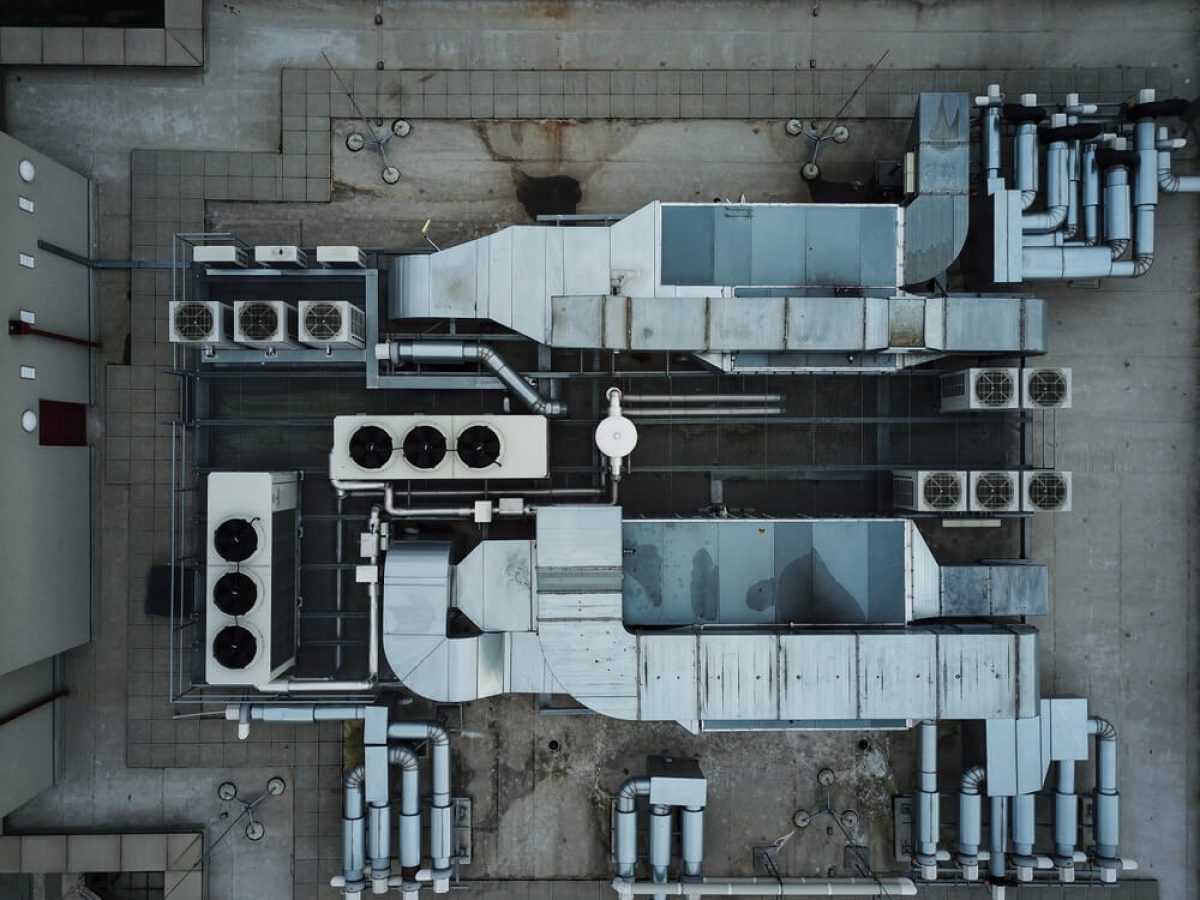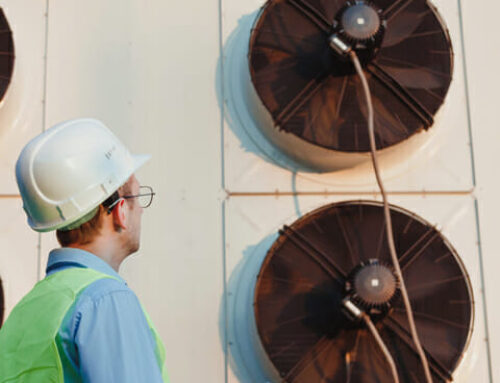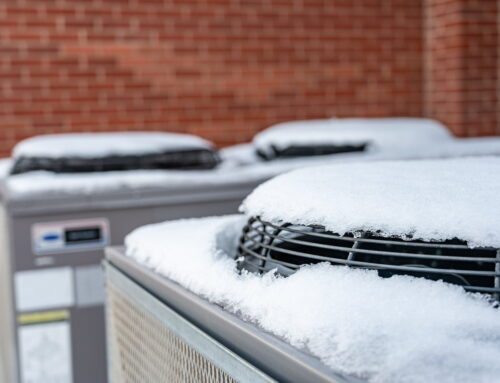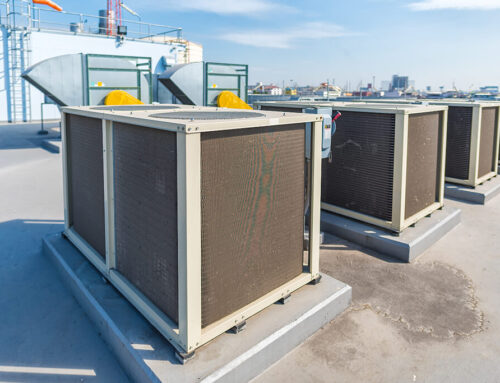Over 40% of energy costs in commercial buildings are devoured by HVAC systems, which cater to heating source, cooling needs, and maintaining the indoor environment with cool air. Efficient commercial HVAC system design isn’t just a luxury for building owners; it’s a pivotal factor in both environmental sustainability and your business bottom line. Navigating the complexities of these business systems requires more than a basic understanding – it demands expertise that marries innovation with practicality and best practices to address project problems. Whether retrofitting older structures or integrating cutting-edge tech into new constructions, every decision made by HVAC professionals impacts project performance, cost-effectiveness, and adherence to best practices for resource utilization.
In today’s fast-evolving market, staying informed about the latest trends, best practices, and technologies in commercial HVAC is crucial for professionals making smart investments that ensure comfort and meet cooling needs without compromising on efficiency or breaking the bank for their project.
Understanding the Fundamentals of HVAC Systems
System Differences
Commercial HVAC systems are distinct from residential ones. They serve larger spaces and have more complex requirements. Commercial HVAC setups often handle variable loads, multiple zones, and must adhere to stricter building codes, best practices, and are typically installed by professionals. On the other hand, residential HVAC systems are designed for single-family homes with less variation in load, differing from commercial HVAC projects handled by HVAC professionals.
In commercial buildings, you might find rooftop units or chillers that are rare in homes. These differences mean that HVAC professionals need specialized knowledge to design and maintain commercial systems effectively.
Key Components
Every HVAC system has crucial parts working together to control temperature. The four main components include:
-
Commercial HVAC project condensers: Release heat from the refrigerant into the outside air.
-
Compressors: Pump refrigerant through the system.
-
Evaporators: Absorb heat into the refrigerant.
-
Air handlers: Circulate air throughout your space.
These commercial HVAC parts work in a cycle driven by a heating source which could be gas, electric, or even solar power in modern designs.
Heat Exchange Process
The heart of an HVAC’s function is heat exchange — moving warmth where it’s needed or not wanted using refrigerants. Commercial HVAC refrigerants absorb heat at low temperatures and release it at higher temperatures as they change state between liquid and gas forms within different parts of the system.
This process relies on thermodynamics principles; hence why proper understanding is essential for effective system design by experts who visit your site or provide information via a website dedicated to HVAC terms and services.
Evaluating Building Types for HVAC System Selection
Building Size
Building size greatly influences the type of HVAC system required. Larger commercial buildings often need more complex HVAC systems to effectively regulate temperature and airflow. Commercial buildings like malls or offices typically have higher occupancy rates, requiring robust systems that can handle continuous usage.
For small commercial spaces, a simple split-system might suffice. This includes a commercial HVAC outdoor unit and indoor units connected by refrigerant piping. However, large-scale commercial HVAC operations may need centralized systems with chillers, boilers, and cooling towers to maintain comfort across extensive areas.
Architectural Impact
The design of a building also affects its HVAC needs. Commercial buildings with high ceilings or expansive glass facades present unique challenges in maintaining consistent temperatures for HVAC systems. Architects and building owners must work together to ensure the chosen commercial HVAC system complements the architectural features.
Innovative commercial HVAC designs might incorporate passive heating and cooling strategies which reduce reliance on mechanical systems but still require careful integration with them for peak efficiency during extreme weather conditions.
Climate Considerations
Different types of climates demand specific HVAC solutions for optimal performance. A commercial HVAC system in a building located in a hot climate will focus on efficient cooling capabilities while one in colder regions prioritizes heat retention and distribution.
Here’s how climate zones impact system selection:
-
In temperate zones: Systems balance between heating and cooling.
-
Hot climates: Prioritize energy-efficient air conditioning.
-
Cold regions: Emphasize powerful commercial HVAC options with good insulation compatibility.
Design Principles for Efficient HVAC Systems
Zoning Controls
Zoning controls are key for energy-efficient HVAC system design. By dividing a commercial building into zones, the HVAC system can target specific areas as needed. This reduces wasted energy in unoccupied spaces.
For instance, during off-hours in a commercial HVAC system, only certain zones may require heating or cooling. Implementing zoning controls in commercial HVAC systems means less strain on the system and lower utility bills.
Automation Integration
Automation is critical for maintaining an optimal indoor environment. It ensures consistent indoor air quality and temperature without manual adjustments in commercial HVAC systems.
Commercial HVAC systems with sensors adjust automatically to changes in occupancy or weather conditions. This integration leads to both increased comfort and efficiency.
Ductwork Prioritization
The commercial HVAC design process must prioritize ductwork for balanced airflow throughout the building. Properly designed ducts distribute air evenly, preventing hot or cold spots.
A well-planned layout helps maintain pressure balance which is essential for an effective HVAC operation. Good ductwork design also minimizes noise and enhances overall system longevity.
Energy Efficiency and Code Requirements in HVAC Design
Energy Codes
Modern HVAC systems must adhere to strict energy codes. These rules aim to reduce energy consumption and costs. They affect how systems are designed, installed, and operated.
Builders must follow these codes for new constructions and major renovations. The codes specify minimum efficiency standards. They also dictate the types of equipment that can be used. This ensures lower energy usage over time.
SEER/EER Ratings
Selecting equipment with high SEER (Seasonal Energy Efficiency Ratio) or EER (Energy Efficiency Ratio) ratings is crucial. It helps cut down on energy costs significantly.
High-rated machines perform better using less power. For example, an air conditioner with a higher SEER rating will cool a space more efficiently than one with a lower score, leading to savings on electricity bills.
Renewable Resources
Incorporating renewable energy sources into HVAC design is becoming more popular.
-
Solar panels can power units directly.
-
Geothermal heat pumps utilize earth’s stable temperatures. These options not only save money but also protect our environment by reducing carbon footprints.
Budgeting and Cost Considerations for HVAC Projects
Initial vs. Operational
When planning a commercial HVAC system design, budget matters. Upfront costs can be steep, but think ahead. Long-term operational expenses often outweigh initial investment.
Consider energy-efficient options discussed previously. They may cost more now but save money later on utility bills. It’s a balance between spending now and saving over time.
Load Calculations and Air Delivery Optimization
Manual J Calculations
Manual J load calculations are vital for designing commercial HVAC systems. These calculations determine the right size of equipment needed. They consider various factors like building orientation, climate, window types, and occupancy.
A precise calculation ensures that the system is neither too big nor too small. An oversized system can lead to wasted energy and higher costs. A system that’s too small won’t effectively manage temperature and humidity levels.
Insulation Impact
Insulation plays a key role in maintaining temperatures within a building. Good insulation reduces heating and cooling loads by limiting heat transfer between inside and outside air. This means less work for your HVAC system.
Selecting the right insulation helps keep cool air inside during summer months while retaining warmth in winter. It’s a cost-effective way to enhance comfort without overburdening your HVAC unit.
Air Distribution Paths
Optimizing air distribution paths is crucial for efficient operation of commercial HVAC systems.
-
Ensure ductwork is properly sealed.
-
Use strategic vent placement for even distribution of cool or warm air.
These strategies prevent hot or cold spots forming in different areas of the space, which can cause discomfort among occupants.
Selecting and Sizing HVAC Equipment Effectively
Tonnage Matching
After determining the load calculations, it’s crucial to match your cooling needs with the right size of HVAC equipment. This process involves matching tonnage requirements to building load assessments. Oversized units can lead to increased costs and inefficiency, while undersized equipment won’t meet a building’s cooling demands.
Correct sizing ensures optimal performance and comfort for occupants. Professionals use detailed calculations to find the precise tonnage needed for each zone in a business or facility. It is not just about installing bigger units; it’s about finding the perfect fit for your specific needs.
Advanced Features
In today’s market, HVAC systems come with advanced features that can significantly improve efficiency. Variable speed technology allows components like compressors and fans to operate at different speeds depending on current cooling requirements.
This adaptability means less energy consumption when full power isn’t necessary, leading to lower utility bills and extended equipment life spans. When planning an upgrade or new installation, evaluating these features should be part of your resource list for effective system design.
Compatibility Considerations
An essential aspect of commercial HVAC system design is ensuring compatibility with existing infrastructure. Your new system must work seamlessly with previous installations regarding controls, access points, and resources available.
Professionals assess these elements during planning stages so that integration issues do not arise post-installation. They ensure that all components are compatible which helps in avoiding future problems related to mismatched systems.
Maintenance Strategies for Long-Term HVAC Performance
Regular Inspections
Regular inspections are vital. They prevent system failures and ensure efficiency. Schedule these checks frequently.
Professionals can spot issues early during inspections. This saves money and avoids downtime. It’s a key part of best practices.
Predictive Maintenance
Use smart sensors for predictive maintenance. These tools forecast problems before they happen.
Smart sensors monitor performance continuously. They detect unusual patterns like short cycling. This allows for timely repairs, improving system longevity.
Staff Training
Train your staff on basic upkeep tasks. Knowing warning signs is crucial too.
A trained team can handle minor issues quickly. They also recognize when to call experts, which protects the system’s health.
By implementing these strategies, commercial HVAC systems remain reliable over time. Regular inspections catch potential problems early on, while predictive maintenance with smart sensors helps anticipate breakdowns before they occur—both essential aspects in maintaining optimal performance and extending the lifespan of the equipment.
Training staff not only empowers them but also ensures that someone is always available to notice any immediate concerns or changes in system behavior such as short cycling—a symptom often indicative of underlying issues within HVAC systems—that might otherwise go unchecked until causing significant damage or failure.
Adopting these proactive measures forms a robust foundation for managing commercial HVAC systems effectively, emphasizing prevention over costly reactive solutions and contributing to a sustainable operational environment.
Closing Thoughts
Delving into commercial HVAC system design is like piecing together a complex puzzle. You’ve got the fundamentals down, weighed different building needs, and tackled efficiency head-on. With energy codes in your toolkit and budgeting savvy up your sleeve, you’re primed to calculate loads and pick top-notch equipment that won’t let you down. And.
Ready to breathe easy with an HVAC system that ticks all the boxes? Let’s roll up our sleeves and make comfort and cost-efficiency your business’s new best friends. Shoot us a message, and together we’ll craft an environment that’s not just cool or warm, but just right for your success.






